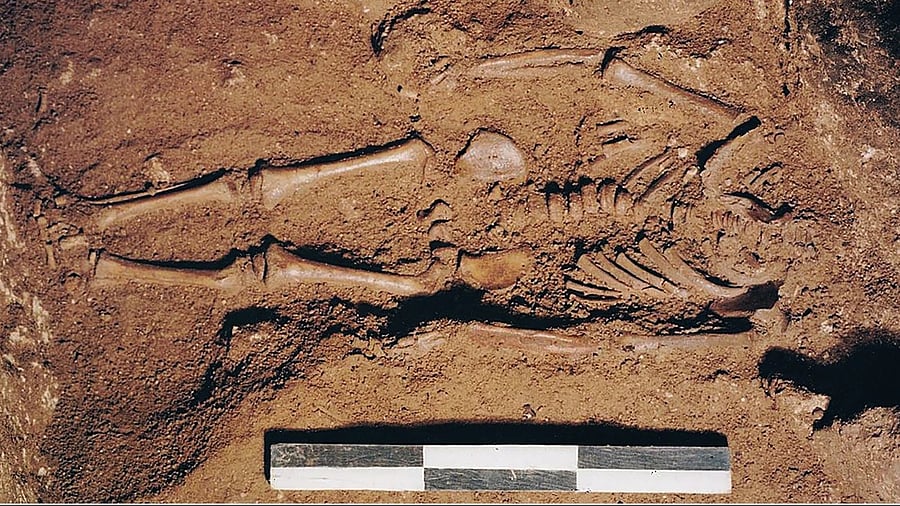
Skeletal remains of Le Mura 1.
Credit: Nature Communications
Scientists have discovered the physical and genetic traits of a baby boy who lived 17,000 years ago in Italy at the end of the Ice Age with the help of his skeletal remains found in 1998.
According to a research paper published in Nature Communications by renowned archaeologists, the child is believed to have died at the age of 16 months and had some distinct physical features like blue eyes, dark skin, and curly dark-brown hair.
The skeletal remains of the infant—Le Mura 1—were discovered in Grotta delle Mura cave near Monopoli, Puglia in southern Italy. The remains, found buried under two large rocks, were largely intact.
The scientists used palaeogenomics, dental palaeohistology, spatially-resolved geochemical analysis, direct radiocarbon dating, and traditional anthropological studies to decipher the life and death of the child.
As per the research, the infant lived just a few centuries after the Last Glacial Maximum, an era attributed to be the coldest period of the last Ice Age. The scientists were able to recover 75 per cent of the infant's genome as the part of the southern Italy where the boy lived had a relatively milder climate, allowing the bones to be preserved.
The genomic data indicated that the infant belonged to the Villabruna cluster, a group of post-Ice Age people who inhabited southern Europe. The child is likely to have been the cluster's ancestor.
The premature death of the child is likely to have been caused by familial hypertrophic cardiomyopathy, a congenital disease which thickens the heart muscles. The genetic analysis has also suggested that the child's parents were likely cousins, a potential cause of the genetic condition.
Though inbreeding was not common among most Paleolithic populations, the research said that "in this instance, the small group size, as suggested by the reduced genetic diversity across the Italian peninsula, might have contributed to the likelihood of it occurring."
The child's mother is believed to have had low mobility during pregnancy because of poor health. Dental analysis of the remains found that this contributed to the infant experiencing at least nine different physiological stress events.
The remains of the infant were found with no grave goods, indicating a simple burial. His were the only remains found in the cave, making it a crucial achievement for the archaeologists to decode the living conditions of the inhabitants of the area.
